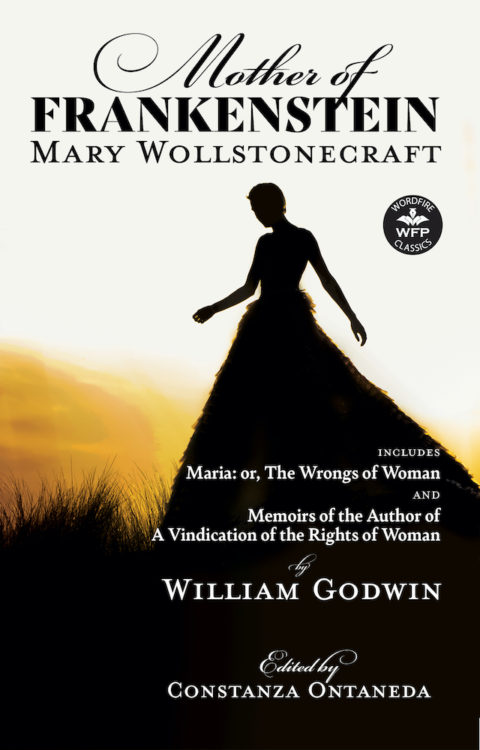MOTHER OF FRANKENSTEIN: Mary Wollstonecraft

ed. by Constanza Ontaneda
WordFire Press
(www.wordfirepress.com)
2021, 245 pages, $32.99
ISBN 978-1-68057-199-8
Click here to purchase
“Enterprising” in an era that was close to downright misogynistic, the mother of the author of FRANKENSTEIN, Mary Wollstonecraft, had sensibilities for the condition of women that were perhaps centuries ahead of her time: the author of numerous texts in the late 18th century, most notably MARIA, OR THE WRONGS OF WOMAN, Wollstonecraft was a late-18th century vanguard for feminist beliefs and strategies. She penned a treatise called A VINDICATION OF THE RIGHTS OF WOMAN in 1792: what it conveyed in the norms of the time was that a woman was not an object, like a favorite futon or vase, that could be affectionately admired or used by the opposite sex at will, with restricted and bound lines of expected attitude and behavior, but a remarkable thinking, creative being.
Were Wollstonecraft’s writings the work of a founding feminist?
MARIA , Ontaneda writes in the foreword, “broke bounds then, and I daresay so much of the world is still of a mindset that the book will break bounds now, two hundred years later. Her work brought to light that women’s rights, as citizens, mothers, and sexual beings, cannot be fully realized under the patriarchal system of marriage present at the time. This book is relevant now because the patriarchal systems Wollstonecraft judged still exist today.”
So Mary’s husband, William Godwin, set out to recount her life and bring to bear her joys and sorrows, her experiences with publishers, friendships she made and loves of her life in part 2 of this book, MEMORIES OF THE AUTHOR OF A VINDICATION OF THE RIGHTS OF WOMAN. Those included affairs of the heart and what happened leading to the birth of her daughter, Mary Wollstonecraft Shelly, who would author FRANKENSTEIN a generation later. Unfortunately, in this case, the author of MARIA died within two weeks of childbirth because of a placenta infection.
As a philosopher, Mary believed perhaps there was not much difference in slavery and the patriarchal institution of marriage. There was so much more to what she believed in a time of revolution, as she came to these realizations after America’s Revolutionary War and the French Revolution soon after. Revolutions were everywhere, even in the very social strata of life.
So a life of feminist leadership was cut short at 38 years of age. Godwin writes that he himself was bound, was compelled to write her tale. He does so with aplomb.

